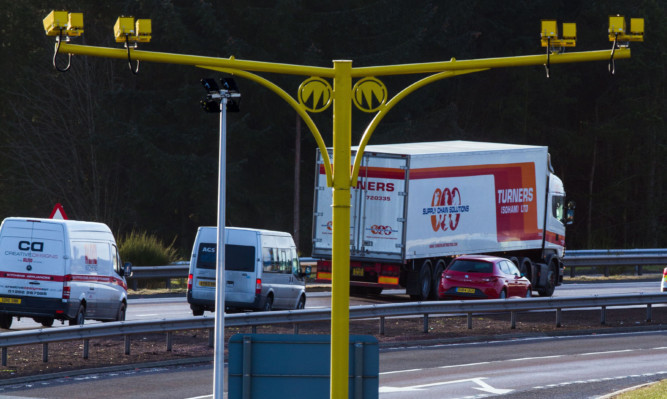More than half of motorists driving on the A9 Perth to Inverness road feel the introduction of average speed cameras has had a positive effect on driving behaviour.
In the first in-depth survey of attitudes since the cameras were introduced, 52% of drivers also said they were “more aware” of keeping to the speed limit.
Of the 573 respondents questioned by ScotPulse, however, only 38% said they feel the average speed cameras have made the road safer.
One of the key findings was that 56% of respondents felt the presence of average speed cameras have had a positive effect on driving behaviour.
Three out of 10 people did not feel the cameras made a difference to the safety of the road but less than one in eight 13% felt they have had a negative effect on driving behaviour.
The online research was carried out on adults living in the PH, IV and FK postcode areas on February 4 and 5.
It sought to gain an insight into attitudes towards the introduction of average speed cameras on the A9 by drivers and those living in communities along the route.
Mike Burns, of campaign group A9 Average Speed Cameras Are Not the Answer, said he feels the results should be viewed in the context of the time of year.
“Traffic volumes have, according to official statistics, dropped almost every month since the cameras have been switched on, which is an absolute first for the A9 in recent history, and winter traffic volumes on the A9 are currently running at 50% of the expected summer traffic volumes,” he said.
“A slower road, with half the traffic volume and an increased journey time, which Transport Scotland miscalculated by a factor of six, does not bode well for the summer chaos set to ensue.”
The survey also found that older respondents were more likely to say the average speed cameras had a positive effect on driving behaviour. It also revealed that respondents in the IV postcode area were most likely to say they did not think the cameras have made a difference than those in the PH and FK areas.
Of drivers who use the A9 Perth to Inverness road, the research found that 27% of people claimed their journey times had increased due to the speed cameras, with 24% stating their journey time remained the same.
The average speed cameras went live in October and cost around £3 million to install.
Figures released at the end of January showed that 300 vehicles have been caught speeding since October, with the ratio of speeding motorists falling from one in three to one in 20 drivers.
The cameras were installed as part of the Scottish Government’s £3 billion project to dual the road for its entire length.
It is hoped 80 miles of dual carriageway will be laid by 2022, with the full project completed by 2025.
